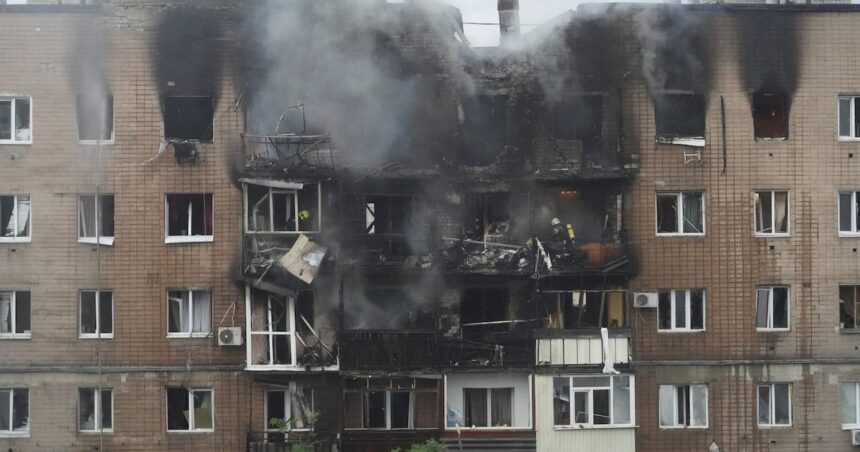In the pre-dawn darkness of Kharkiv, the haunting wail of air raid sirens gave residents mere moments to seek shelter before Russian missiles and drones slammed into Ukraine’s second-largest city early this morning. The coordinated barrage left three civilians dead and dozens wounded, marking one of the most intense attacks on the northeastern hub in recent months.
“The explosions shook my entire building. Glass everywhere. This wasn’t just another strike—this was methodical targeting of civilian areas,” said Olena Kovalenko, 43, who lives in central Kharkiv, just two kilometers from where one missile hit an apartment complex.
Local authorities confirmed that Russian forces deployed a devastating combination of S-300 missiles, guided bombs, and Iranian-designed Shahed drones across multiple districts. The assault damaged critical infrastructure, including a power substation that left approximately 200,000 residents without electricity during freezing temperatures.
Kharkiv Regional Governor Oleh Syniehubov reported through official channels that emergency crews continue to sift through rubble at three major impact sites, with fears that the death toll may rise. “This is a clear escalation in both intensity and targeting strategy,” Syniehubov stated during an emergency briefing.
Military analysts suggest this attack represents a worrying shift in Russian tactics in eastern Ukraine. “What we’re seeing is Russia compensating for battlefield stalemates by increasing pressure on civilian centers,” explained Dr. Marta Shevchenko, defense strategist at the Royal United Services Institute. “Kharkiv’s proximity to the Russian border makes it particularly vulnerable to these rapid aerial assaults.”
The timing of today’s bombardment coincides with renewed Russian ground operations in the Donetsk region, where Ukrainian forces report heavy artillery exchanges near Avdiivka and Bakhmut. Ukrainian military intelligence indicates Russian commanders are attempting to stretch Ukrainian air defenses by creating multiple crisis points along the 1,000-kilometer front line.
This latest assault comes just days after Western allies announced new military aid packages for Ukraine, including advanced air defense systems that remain in transit. The apparent targeting of civilian infrastructure aligns with Russia’s winter strategy of damaging Ukraine’s power grid as temperatures plummet below freezing.
International reaction has been swift, with Canadian Foreign Affairs Minister Mélanie Joly condemning the attacks as “deliberate targeting of civilians” and promising additional humanitarian support. Meanwhile, the European Union announced expedited delivery of power generators and emergency heating equipment to affected regions.
For Kharkiv residents, today’s attack represents a grim reminder that despite being partially rebuilt following earlier phases of the war, their city remains perilously exposed. Local officials have urged non-essential personnel to evacuate to safer western regions, though many refuse to leave their homes.
As Ukraine’s military works to strengthen air defenses around major population centers, the fundamental question persists: can civilian areas ever be adequately protected against an adversary willing to employ overwhelming aerial firepower against urban targets? The answer may determine not just Kharkiv’s fate, but the future security architecture of all Ukrainian cities under threat.

























